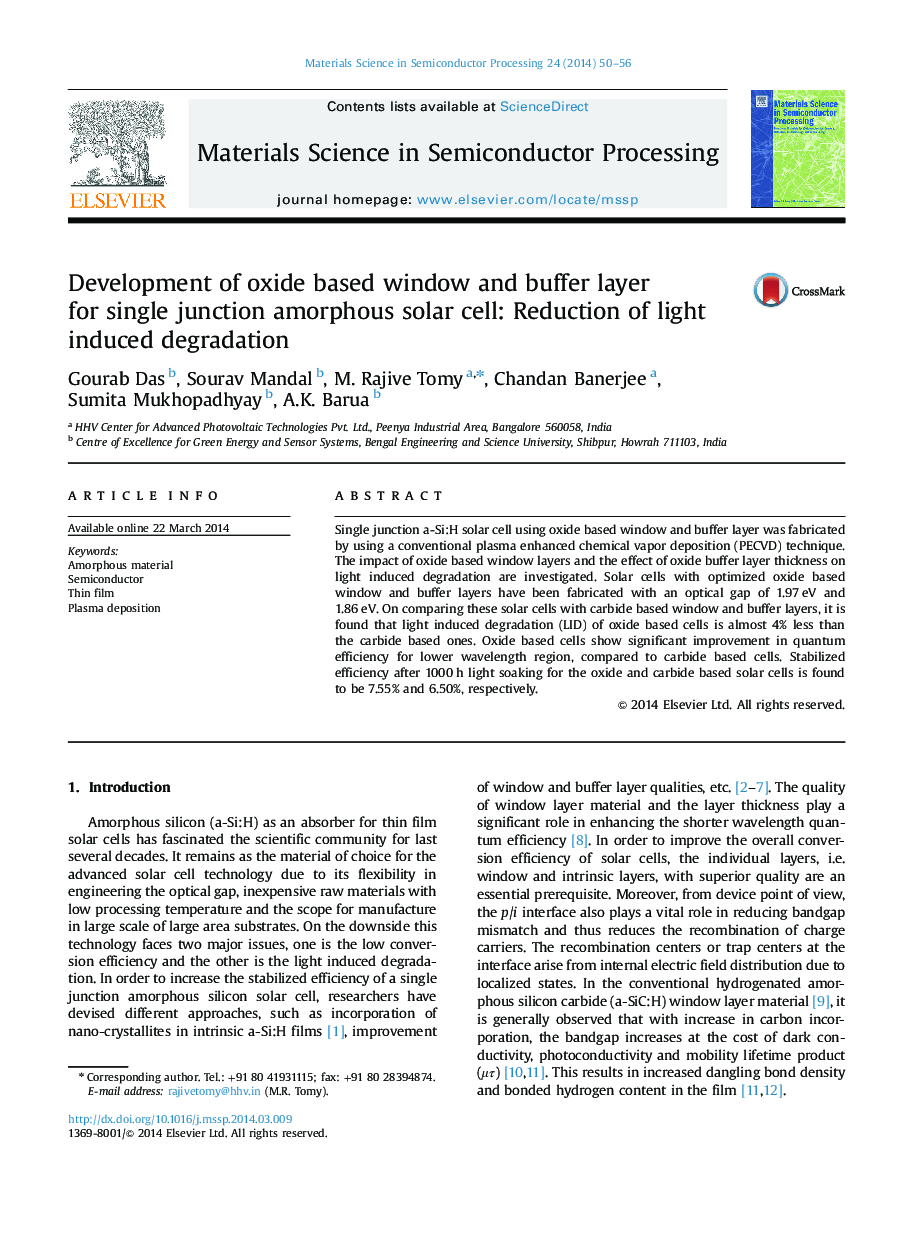| Article ID | Journal | Published Year | Pages | File Type |
|---|---|---|---|---|
| 729348 | Materials Science in Semiconductor Processing | 2014 | 7 Pages |
Single junction a-Si:H solar cell using oxide based window and buffer layer was fabricated by using a conventional plasma enhanced chemical vapor deposition (PECVD) technique. The impact of oxide based window layers and the effect of oxide buffer layer thickness on light induced degradation are investigated. Solar cells with optimized oxide based window and buffer layers have been fabricated with an optical gap of 1.97 eV and 1.86 eV. On comparing these solar cells with carbide based window and buffer layers, it is found that light induced degradation (LID) of oxide based cells is almost 4% less than the carbide based ones. Oxide based cells show significant improvement in quantum efficiency for lower wavelength region, compared to carbide based cells. Stabilized efficiency after 1000 h light soaking for the oxide and carbide based solar cells is found to be 7.55% and 6.50%, respectively.
